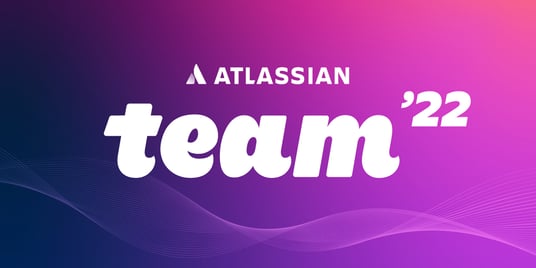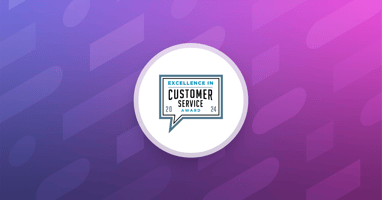Get a Free Trial
Creating, executing, and maintaining reliable tests has never been easier.
This week, software innovators are gathering for Atlassian Team ’22, the flagship conference for ITSM, DevOps and Agile, and Work Management leaders and thinkers. The hybrid event features speakers from the best and brightest software companies in the world, including mabl Product Manager Thomas Lavin and Cloud Architect Joe Lust.
Mabl’s participation in Atlassian Team ‘22 builds on our long-standing partnership with the software development and collaboration giant. We’re a proud contributor to Atlassian’s Open DevOps initiative, which enables software development teams to build a customized DevOps toolchain of best-in-class solutions and offer native integrations with Jira, Bamboo, and Bitbucket. At Atlassian Team ‘22, Thomas and Joe share the latest ways to harness end-to-end test automation for quality-centric DevOps pipelines.
Data, DevOps, and Digital Workflows
Mabl’s 2021 Testing in DevOps Report found that most aspiring DevOps teams believe the right tools exist. The real challenge is building processes that enable collaborative, iterative sprints and continuous improvement for the long haul. Atlassian’s Open DevOps program helps address this issue by allowing software teams to customize their toolchains with the best-of-breed solutions that fit the needs of their product and organization. When DevOps toolchains can harness the best solutions across the development pipeline, software teams are able to improve collaboration and integrate quality throughout development. Mabl’s discussions at Atlassian Team ‘22 share how quality can be baked into DevOps with test data.
Best DevOps Practices for using an Open Toolchain
Mabl Cloud Architect Joe Lust joins an esteemed panel featuring Snyk Field CTO Simon Maple, Atlassian Director of Solutions Engineering Eddie Webbinaro, and Atlassian Developer Partisan Ian Buchanan to talk about observability in open toolchains. Many software development teams are finding that after years of adding to their toolchains, developers are overwhelmed by vulnerability scans, credentials checks, bill of materials analysis, and a flood of dependencies. Ironically, the inundation of signals from pipelines has resulted in developer overload, making it more likely that issues will be missed in development. As a result, organizations are increasingly at risk of shipping poor quality software.
Joe recommends that teams seeking to limit the noise across their pipelines start with the build and quality strategies they want to achieve, and then reduce their pipelines to practice with individual toolchain components.
He explained mabl’s own experience building their pipelines around quality:
“Specifically, we’ve done this with our internal tooling at mabl, first choosing the core common workflows and quality gates we need for releases, and then finding the right tooling for each job. This way, even though your tooling will likely change three years from now, your overall strategy and pipeline design can stand the test of time.”
Maintaining a higher focus on specific goals, like quality or security, is critical for teams looking to create feedback loops that can enable pipelines to make routine decisions, like blocking releases, rolling them back, automatically. The best way to do so: adopting solutions that enable single pane of glass visibility into the most significant metrics across a DevOps pipeline, like mabl or Snyk. Coalescing pipeline signals around those key metrics will make it easier for the entire development team to understand the state of the product and opportunities for improvement.
Using Intelligent Test Data to Improve Collaboration and Product Quality
As teams build focus around the core data that improves their DevOps practices, many are turning to test data to understand the evolving state of product quality. Traditionally, when most software developers think of test data, they see a list of pass/fail data points or a test coverage percentage. Product Manager Thomas Lavin shared how intelligent test automation is producing a wider range of actionable information than ever before:
- Functional: Is everything passing?
- Velocity: How much time is spent on testing?
- Coverage: What’s being tested? Is it improving?
- Non-functional: Is our application performant? Is it accessible?
When software development organizations start tracking - and using - this information, they begin discovering powerful insights that can help them accelerate development, reduce bugs in production, and facilitate team collaboration. The end result is a nimble organization that’s more efficient and more productive.
But how can software development teams tap into these insights without adding to the often overwhelming signals already produced by DevOps pipelines? As discussed in Joe’s panel, simplifying workflows and signals ensures that pipelines and developers are resilient and adaptable. Quality signals like test coverage and non-functional testing are important indicators of how code connects to the customer, as test coverage is closely correlated with customer happiness. In fact, 80% of development teams that report high test coverage say their customers are very happy, while just 30% of low test coverage teams say the same.
Similarly, non-functional testing like performance and accessibility are critical for evaluating quality as customers see it. Considering that vision impairment alone is one of the most common disabilities among Americans aged 18 and over, accessibility testing is a rapidly growing legal and ethical requirement. Building workflows that consider these core quality metrics is essential for building quality applications that delight customers in a DevOps world.
Building Toolchains and Workflows for Quality-Centric Pipelines
Open DevOps is designed to make these signals easier to discover and track. Mabl’s native integration with Jira, for example, allows rich testing insights to be automatically shared in Jira tickets for rapid resolution. By building intelligent test automation into a familiar workflow, checking a Jira ticket, software development teams can turn testing insights into action. An interconnected, data-rich toolchain with Atlassian’s Open DevOps initiative ensures that software development teams have the solutions they need to collaborate, automate, and accelerate product development for a DevOps world. Explore the full possibilities of Open DevOps at Atlassian Team ‘22.





